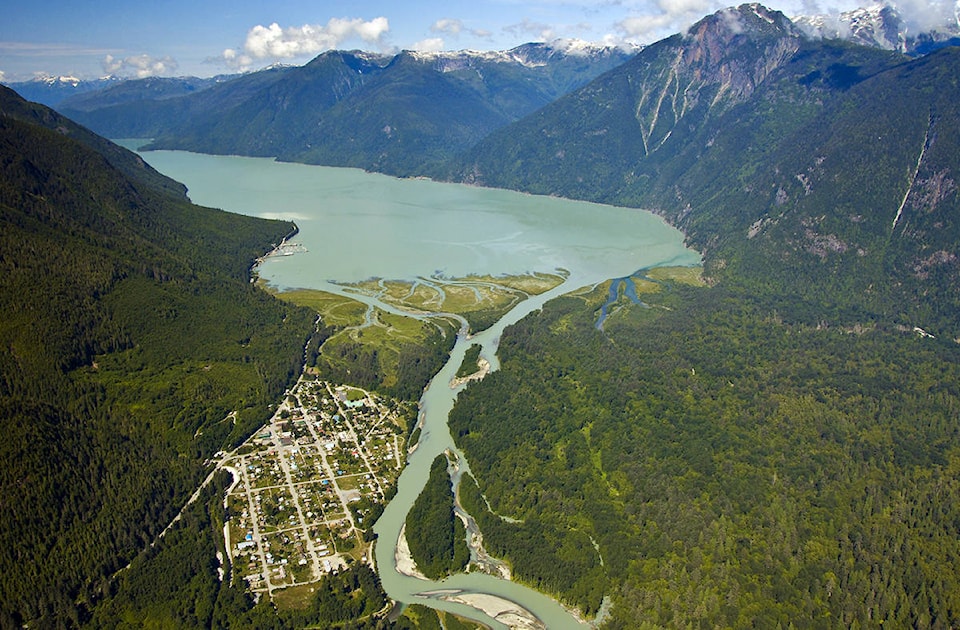A 7.9 earthquake off the coast of Alaska during the early morning hours of January 23 triggered a tsunami warning for the much of the west coast, resulting in evacuations of the lower Bella Coola townsite and communities along the Central Coast.
At present, the CCRD does not have a full-time Emergency Program Coordinator (EPC) and the EPC duties are being managed by the CAO, Courtney Kirk. However, former CCRD EPC Stephen Waugh says it would be “extremely rare” for any activity resulting from an ocean-based tsunami to reach Bella Coola.
“After the Indonesian tsunami disaster in 2004, we had seismic experts from EMBC visit the Valley and several conversations with UBC,” said Waugh. “The general consensus was that there was no significant threat to Bella Coola from an ocean-based tsunami.
“Any wave activity that would threaten Bella Coola would more likely result from a landslide in the inlet or even a meteor strike in the area, which would not trigger a local warning as there are no mechanisms in place for that.”
Waugh said the general rule of thumb for dealing with earthquake-caused tsunamis is that if you feel the ground shaking, retreat to higher ground. In Bella Coola, the post office was considered double the height that was required in the event of the most extreme activity.
He also explained that the geography of the area would provide a natural buffer for any ocean-based tsunami’s, as the inlet is very baffled and ends with a deep estuary and not a shallow shore.
Despite some of the local confusion around what is to be expected locally during a tsunami warning, Waugh said it’s a great reminder that being self-reliant and prepared during an any emergency scenario is the most important thing.
“There is no substitute for personal preparedness,” Waugh stressed. “It’s absolutely number one.”
Nuxalk culturalist Clyde Tallio also confirmed that he has yet to find any evidence of local tsunamis in Nuxalk oral history.
“There are no old stories [of tsunamis] that I have heard,” said Tallio.
Jordan Turner, Communications Manager with Emergency Management BC, said it’s up to local governments to investigate and identify risks to their areas, and that they will continue to receive EMBC warnings regardless.
“EMBC issues warnings but we are not responsible for identifying the risks in particular regions,” said Turner. “That the responsibility of the local government and they are expected to carry out any evacuations as they see fit.”
Area E Director Sam Schooner, Chair of the CCRD´s Emergency Program Committee, said that the evacuation was a “wake-up call” for the whole community.
“The tsunami warning was a real wake up call for all of us and we are taking steps to address the communication gaps that were magnified during last week’s evacuations,” emphasized Schooner “It’s also great to hear some community members are taking their individual responsibility seriously with folks gathering to make plans for their neighbourhoods.”
While Bella Coola might not be in a high-risk area, other coastal communities are. In Bella Bella, the R.W. Large Hospital and many homes are located right at sea level.
Gary Housty, manager at the hospital in Bella Bella, was first alerted to the warning by pounding on his apartment door at 2:10 am from a staff member informing him that the hospital needed to be evacuated.
The evacuation went smoothly, and once the warning was lifted about 4:30 am, staff returned all the patients back to the hospital.
The situation in Bella Coola mirrored Bella Bella’s. Sharon Carroll, manager of Bella Coola General Hospital, said the staff and community pulled together to safely evacuate 11 patients to a school a few kilometres away. Just as they were being offloaded into the school, she received word that the evacuation notice was cancelled.
“It was a busy couple of hours,” said Carroll.
According to one resident at the Mountain View Seniors Lodge, it was an “evacuation in slow motion.” Many of the residents there are elderly and evacuating them was a challenge, especially at such an early morning hour and with limited assistance.
“This was a real wake up call, not just for tsunamis but also other emergencies,” said resident Elaine McLean. “We were fortunate that this was not a real emergency, but if had it been I don’t think the outcome would have been very good.”
RCMP Sgt. Rick Skolrood, whose members assisted with many of the townsite evacuations, agreed with Tallio and Waugh, stating that the risk of a tsunami to the community is low but the need for preparedness is always paramount.
“Local wisdom is such that a tsunami from far out in the Pacific Ocean is unlikely to rush ashore as a traditional tidal wave, but this incident once again highlighted the need for the Valley to move forward with the Interagency Emergency Preparedness Committee,” said Skolrood. “I applaud Bridget and Courtney at the CCRD for all the work they have put in on that initiative and how they have worked with the local RCMP since I have arrived.”
